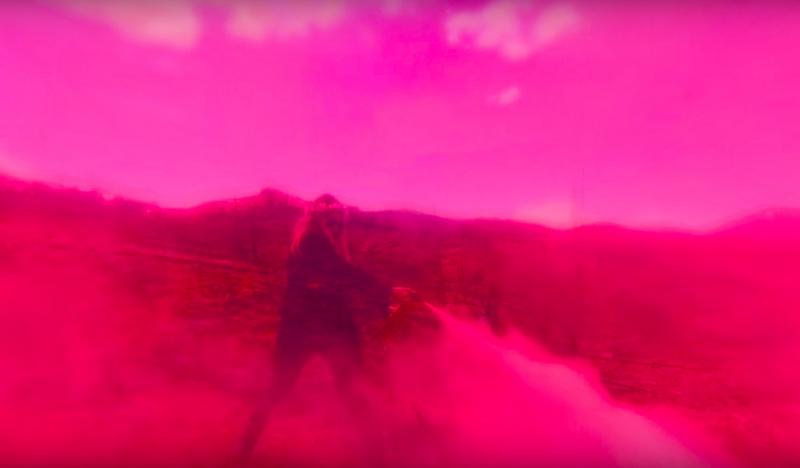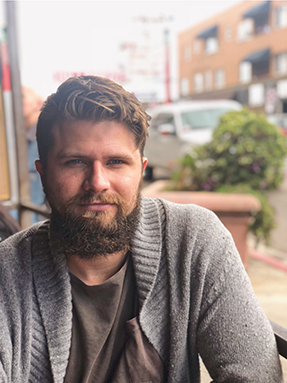DU Student Emilie Trice Builds Virtual Worlds

A still shot from Emilie Trice's video project "Millennial Pink"
With experience running art galleries and curating exhibitions in New York, Berlin and Aspen already under her belt when she began looking for graduate programs, Emilie Trice is no stranger to the world of art. Still, in a rapidly digitizing world, she saw a wealth of opportunity in new technologies for creative forms and means of expression. So when Trice discovered the master’s program in Emergent Digital Practices at the University of Denver, she knew that she had found her way into an even more intricate world of art.
“I chose Emergent Digital Practices because it allows me to keep one foot in the art world while adding highly relevant and sought-after skills,” she says. “The EDP Department is way ahead of the curve in terms of the burgeoning art and tech field.”
Trice’s fondness for art that utilizes space and environment was born during her time in Berlin in the early 2000s, where she had opportunities to curate art shows. Trice says that her experience in the EDP program has dramatically expanded her artistic palette, though, noting that at times, some of the tech she’s working with feels almost like magic.
Last fall, Trice had the opportunity to build an interactive art piece for her Expanded Cinema class with Trace Reddell that incorporated sensor-equipped punching bags that were projection-mapped with images of ecological catastrophes and Donald Trump speeches. Hitting a bag caused cartoon-style impact stars to explode in the video.
“It was a really cathartic piece,” she says. “But just as important was the tech I learned to use. Arduino hardware, accelerometers, VJ software, custom visual programming software, projection mapping. I had no experience with any of them prior to the EDP program.”
That kind of technical wizardry, combined with emotionally resonance and social critique, has led to Emilie’s work being featured in some of the art world’s most prestigious settings. For instance, a VR installation that Emilie created was exhibited at Denver’s Leon Gallery, and an iteration of that same project was displayed at the Contemporary Art + Digital Art Fair (CADAF) in Miami during Art Basel.
For Emilie, though, the real reward of the EDP program is working with her classmates at the master’s level. The program’s flexibility makes it an incubator for new ideas and challenging forms.
“It’s a diverse cohort of students, and each of us has our own trajectory,” Emilie says. “It creates a really supportive, non-competitive environment.”
Emilie has taken full advantage of that creative atmosphere, working with students at the Lamont School of Music and elsewhere to create multi-disciplinary works of art. That spirit of collaboration reveals itself in her work and goals for the future.
“I like to make art, I like to sell art, I like to write about art, I like to put on shows of other peoples’ art,” she says. “Now I have a much broader spectrum of tools to work with.”
As for her personal dreams? It all comes down to that sense of artistic community.
“My dream is to have my own non-profit artist residency,” she explains. “I want artists from all over the world to come to an idyllic location and just create, imagine and exchange ideas.”






